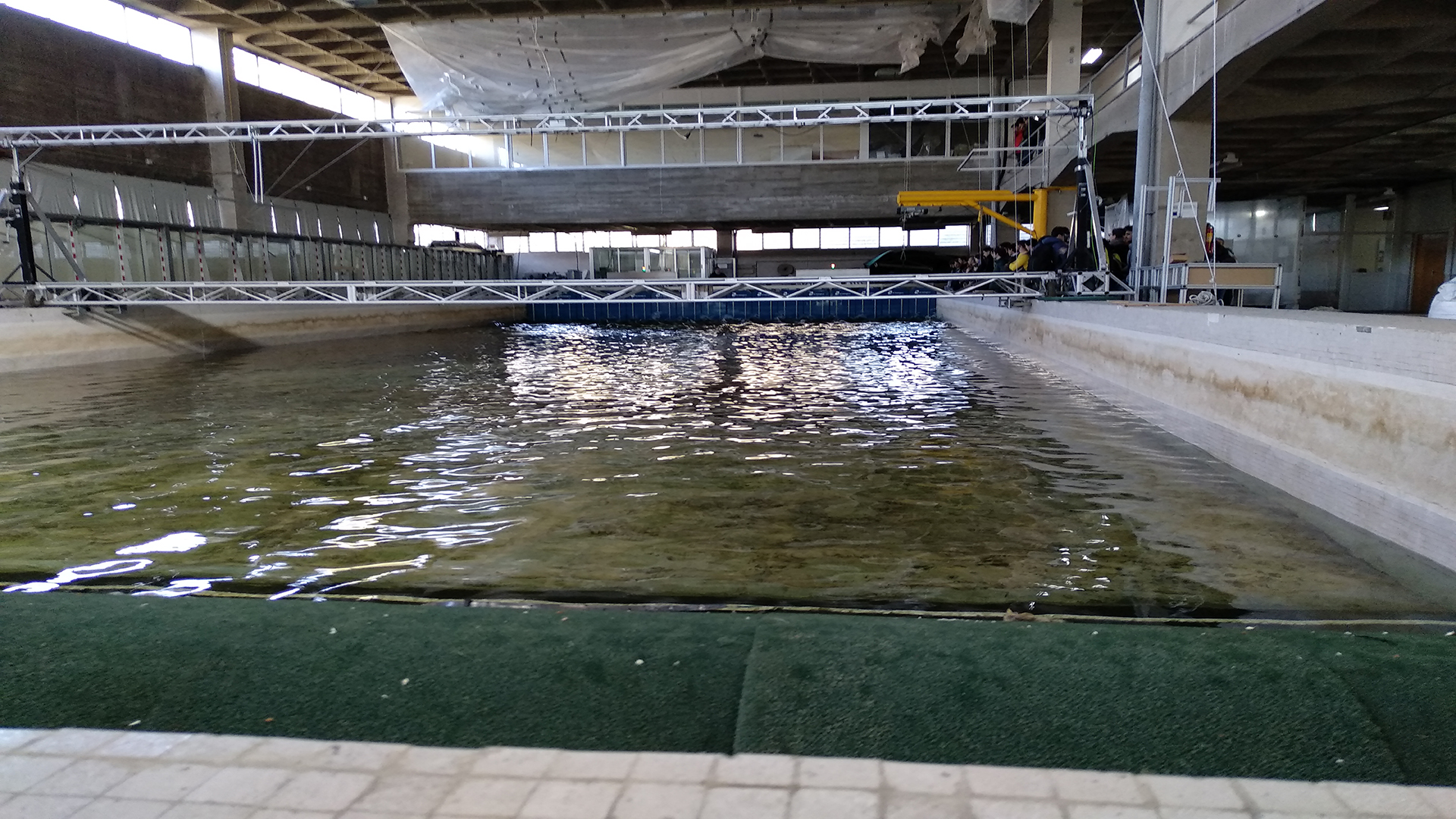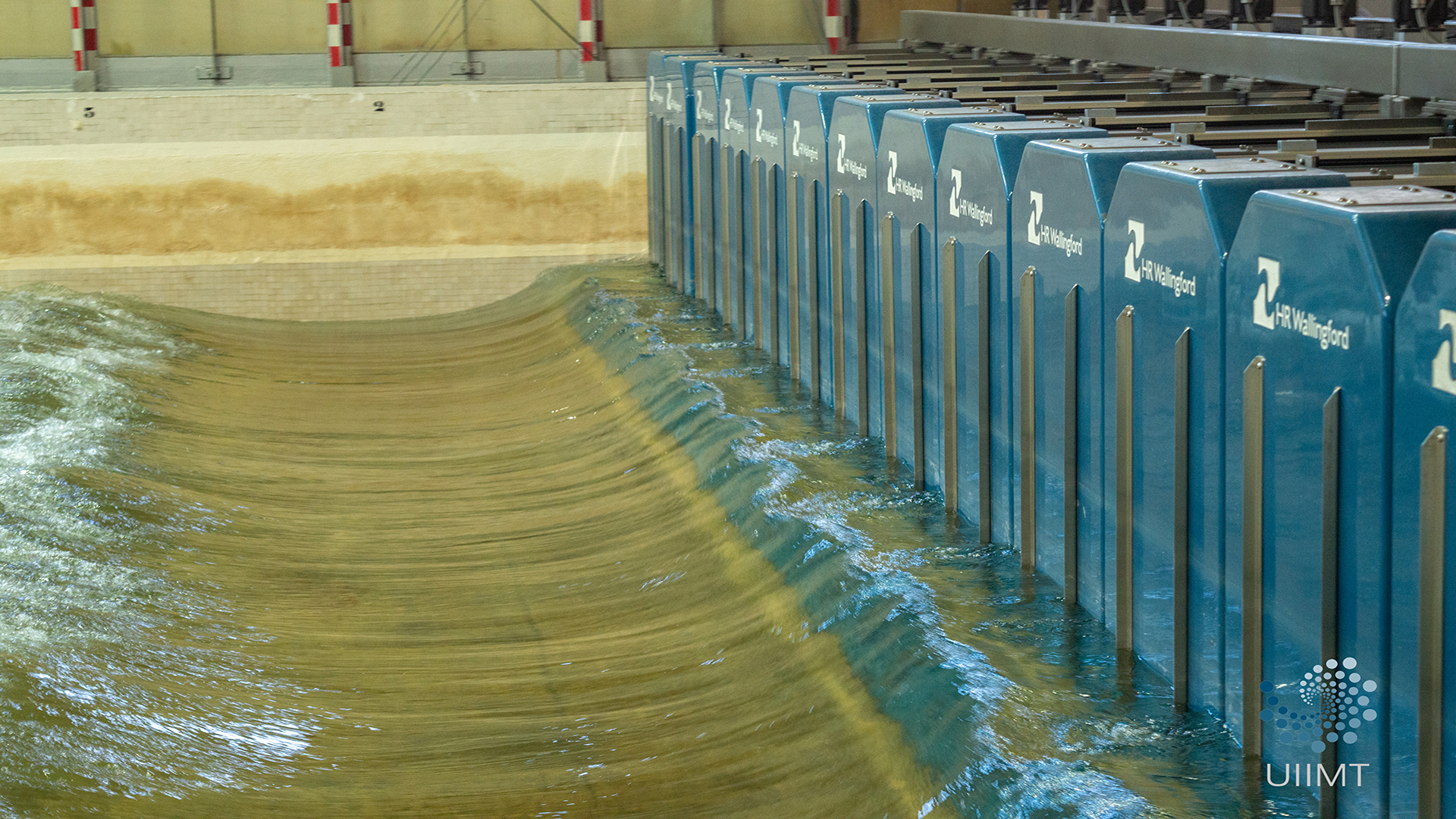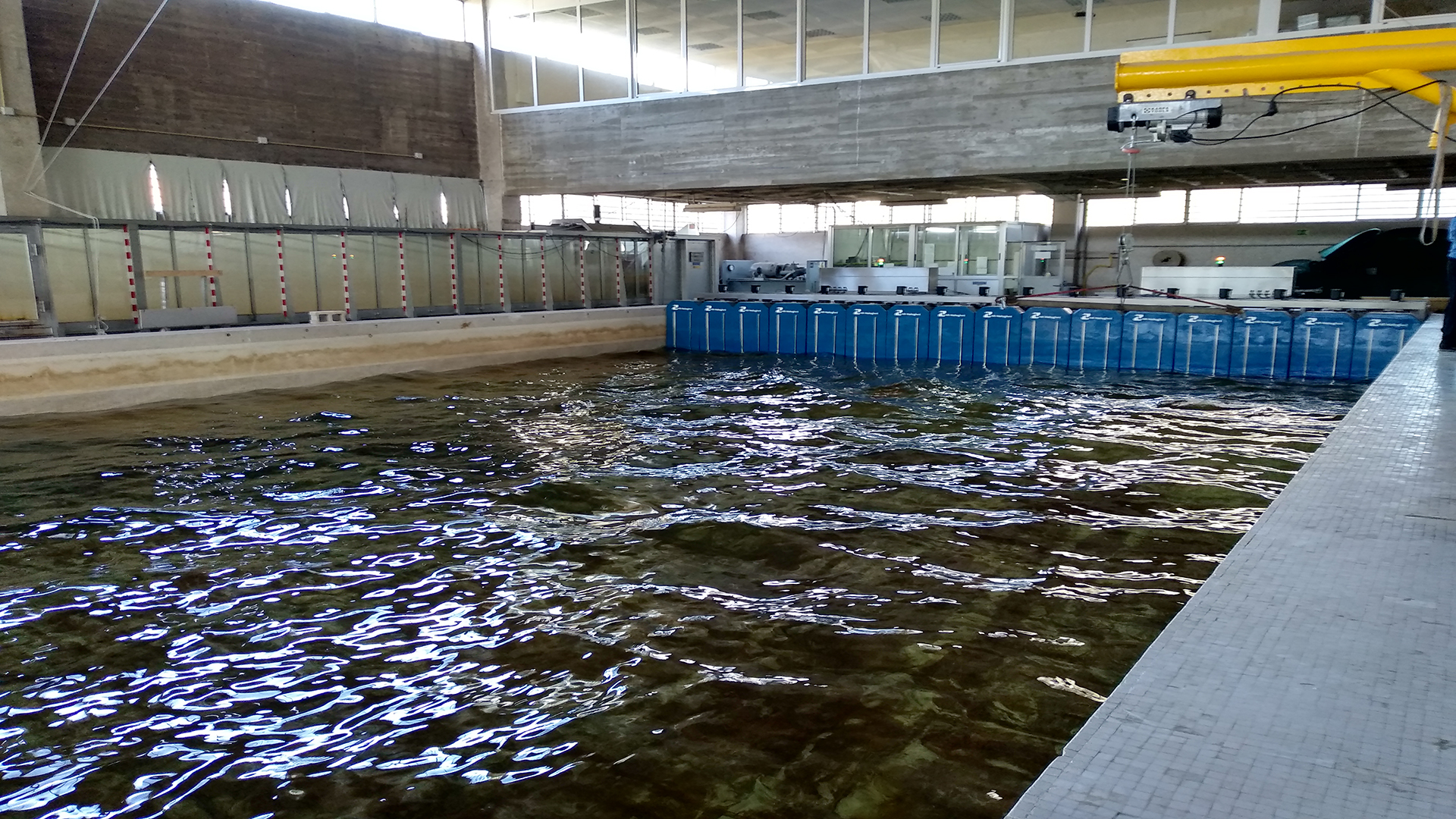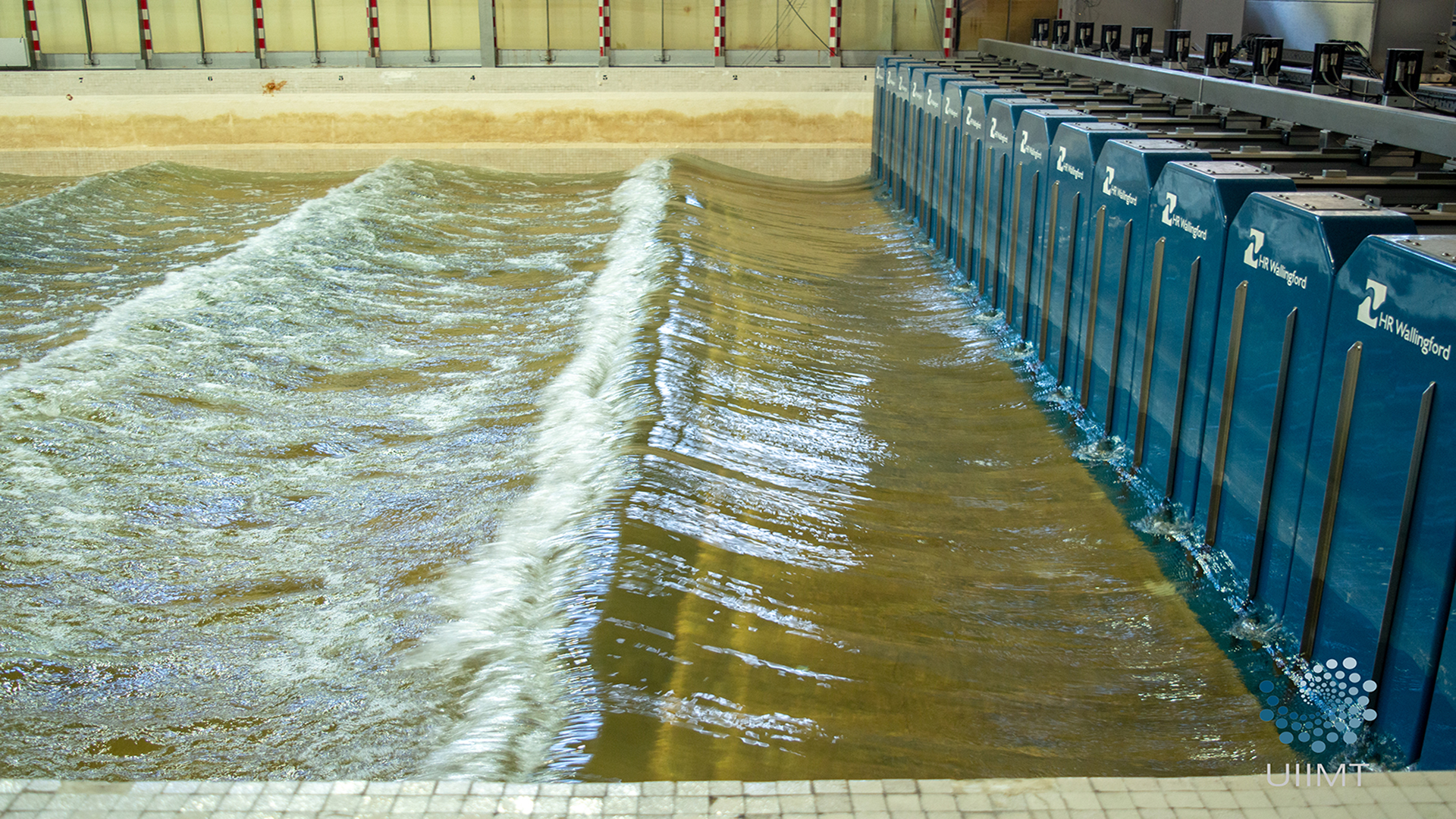Site card
Ports Laboratory Test Chamber, Civil Engineering Technical School
Where:
Environment Coast and Ocean Research Laboratory
Ubicación:
ETS Ingenieros de Caminos, Canales y Puertos
Typology:
Infraestructura Científica
Manager: José Luis Orts Egio
Email:
Ports Laboratory
Marine Engineering
The facility is used for teaching and research purposes in the field of experimentation involving small-scale physical models of offshore, port and coastal engineering works.
The teaching work focuses on three main areas: first, the reliability of protection structures, namely sloping, vertical, mixed and special dykes; second, marine energy resources and devices; and, third, landscape, sustainability and sensitive area analysis, as well as coastal environment defence and protection. The current research lines are also focused on three main areas: first, the reliability of protection structures of all different types, including special dykes; second, marine energy, both wind energy, in terms of its resources and foundations, and energy derived from waves, tides and currents; and, third, sustainability, sensitive area analysis, the natural, built, destroyed and restored landscape, the fight against erosion and environmental protection of the coast.
The United Nation¿s Sustainable Development Goals (SDGs) 7, 13 and 14.
The laboratory consists of a 52-metre-long channel with a 1 metre-wide by 1.5-metre high cross-section. It is able to generate regular and irregular waves of up to 0.45 metres in a depth of 1 metre. It has reflected-wave absorption control and it controls dissipation using polyurethane foam. The tank for three-dimensional testing, which occupies the central part of the building, has a depth of 1.36 metres, a width of 11 metres and a length of 33 metres. The bottom of the tank is finished in in situ terrazzo and the vertical walls are finished in continuous tiling, fitted with an anti-reflection system using 10 ppi polyurethane foams. By moving individual paddles, it generates multi-directional waves with absorption control, which can reach up to 1 metre. The wave maker, which comprises 16 paddles measuring 0.70 metres in width and 1.30 metres in length, displays the following performance: H = 0.25 metres in a depth of 0.6 metres.








